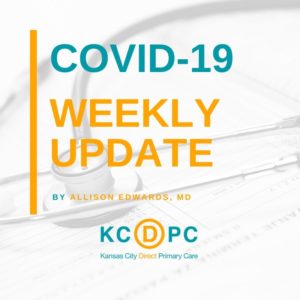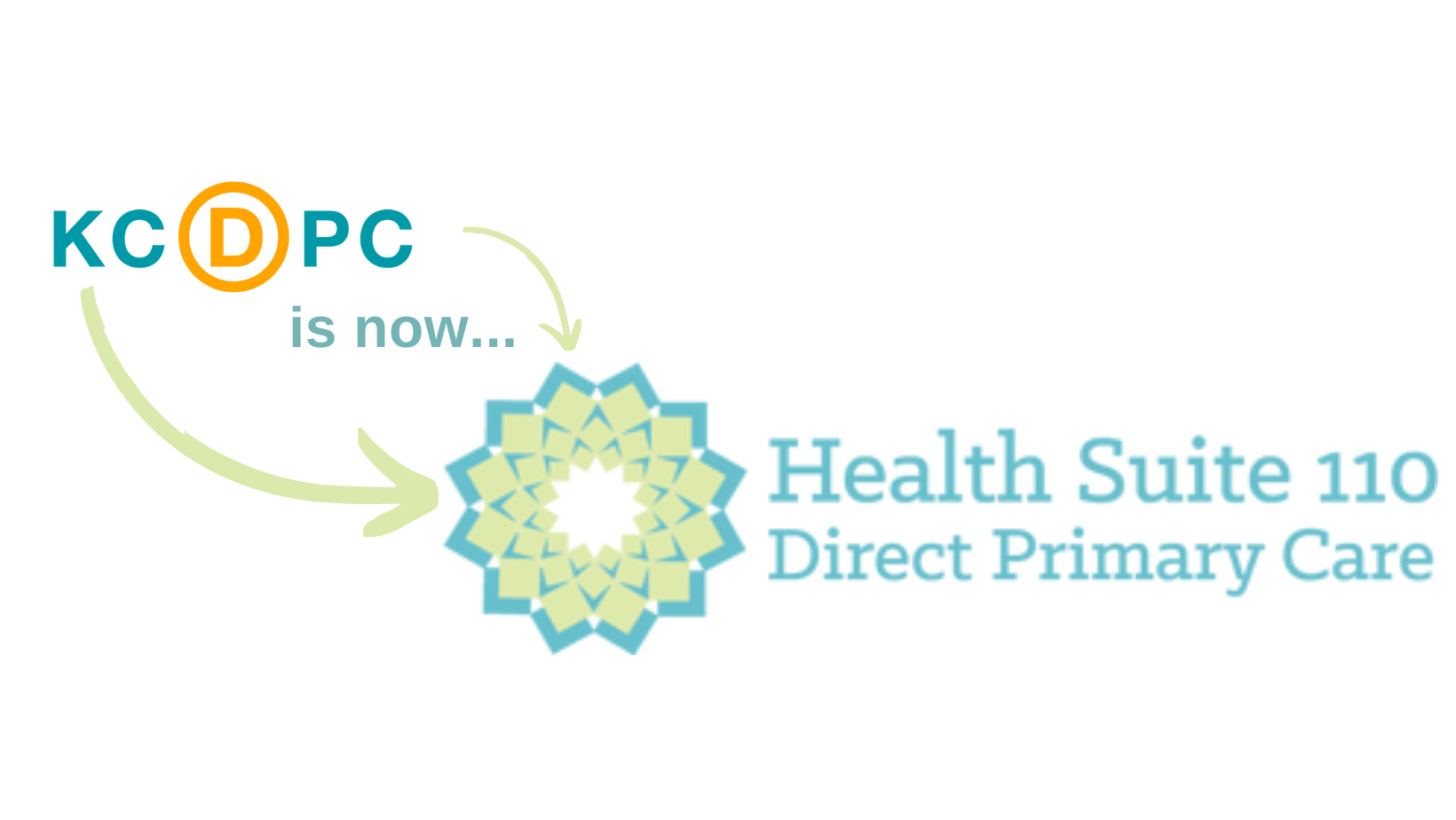 Hello KCDPC Family!
Hello KCDPC Family!
Because of the US’s transition to a Level 2 travel restriction and the accompanying acknowledgement that we are seeing community spread of COVID-19, I’d like to update you — again — on a few changes we are making to our normal procedures.
Let me emphasize that as a Direct Primary Care practice, we are already prepared for this situation. By now, you are used to alternative types of visits by phone, video, or email, which is what you already found convenient about our practice. In order to protect our most vulnerable, we will use this to its full capacity during this situation.
We want to make sure that the spread of COVID-19 is minimized as much as possible in our clinic as well as our community, and, for that reason, we will be implementing telemedicine for all visits, unless they are deemed urgent by a clinician and require an in-person visit (and a clinician is available/not in quarantine for such a visit). All physicals, well child visits, and well woman visits will be postponed until after we have made it through the worst of this COVID-19 outbreak. If you are well, we want to keep you that way! If you have an appointment in the next 3 weeks, we will be contacting you this week to postpone the visit or change the visit to a phone or video conference visit, depending on your needs, preferences, and your ability to use video conference software.
Important to note: if any of us come into contact with someone who is positive for COVID-19, all KCDPC staff & physicians who made contact with that individual will have to quarantine for 14 days. As we’re small, this may lead to a situation where we will have to close for all in-person interactions, prescription pickups, etc. for up to (and potentially longer than) a 14-day period. Please let us know if you’d like to get refills, pickup a 90-day supply of medicines, etc. before this occurs.
Many people across the community are scared that they will have limited access to care because of cost, insurance issues, and lack of access to telemedicine; many practices are not set up to provide flexible care easily. We are lucky that this is already built into our system, and you never have to pay extra for access to us!
Please do not hesitate to ask questions and let us help you allay fears or correct misinformation. Additionally, you are welcome to share any/all of the information contained within this email or any of our blog posts — let’s show our community what real health care looks like.
May you all stay healthy!
Allison Edwards, MD
PS — the following information is for your reference and, hopefully, will provide a concise synopsis of where we are with COVID-19 currently. Some of it is quite similar to last week’s information.
______________________________
In the news this week:
As I mentioned, I’ll try to pass along information on a weekly basis. On the news front, there were some big changes in the last week.
-
The US is now considered a Level 2 travel region according to the CDC; this means that there is community transmission of COVID-19 throughout the United States. (Community transmission means that we can’t link each case back to a specific person who, for example, had traveled to a region with many cases.)
-
The Trump administration held a press conference to convey that it is working on a relief package to help take some of the economic hardship off of the shoulders of the American People; the House passed a bill early on the 14th on the matter. I’ll share more details about this as they come to light.
-
Testing became more widely available — but it isn’t still available to everyone. The drive-through testing announced by the administration still doesn’t have solid details hammered out.
-
We have confirmed the testing protocol that we can administer here at the clinic for COVID-19 through both the state and through our commercial vendor; however, we will only be recommending testing for those with more severe illness (i.e. we will not be arranging for testing for everyone with mild symptoms) and may actually refer you to the hospital for formal testing in this case.
What do I do if I’m sick?
-
If you have isolated, upper respiratory symptoms and no fever (i.e. a cough, runny nose, sore throat, stuffiness, ear pain, etc.), we recommend home care and that you not schedule time for a phone visit. Just like any other respiratory illness, this virus is mild and/or tolerable in a vast majority of people.
-
If you have lower respiratory symptoms (i.e. shortness of breath, difficulty breathing, difficulty speaking in full sentences, etc.) and/or fever, Lauran Gress, RN or myself will recommend a telephone visit to figure out what the next best steps are.
-
If we determine that you need an in-person visit and there is a clinician available to provide one, the visit will occur in your vehicle in the parking lot of our clinic so as to prevent potential spread and exposure to others.
-
-
If you have severe symptoms, we will likely refer you directly to a hospital. From what we know thus far about COVID-19, symptoms severe enough to require hospitalization occur approximately 9-12 days after symptoms first appear.
-
Until we have clear direction from Quest and/or the State Health Department that there are enough testing kits for widespread testing, we will not be recommending testing for just anyone with symptoms of respiratory infection; we will be making this decision on a case-by-case basis.
Here’s what we know thus far:
-
The novel Coronavirus started in China in late 2019 (the working theory is that it jumped from bats to humans at a wet market in Wuhan, China) and was given the name COVID-19 by the WHO shortly thereafter. The virus eventually spread regionally and in February 2020 we saw cases extend to every continent (except for Antarctica).
-
Every single one of us has had a coronavirus infection in the past — it’s one of the viruses (along with rhinovirus, adenovirus, etc.) that causes the common cold. This novel Coronavirus (COVID-19) is just a variation (or mutation).
-
This new coronavirus can cause anything from nothing to a mild cold to a potentially lethal viral pneumonia.
-
Those who seem to be most affected by COVID-19 thus far are those who are more at risk to begin with: those who are older, those with multiple chronic health conditions, etc.
-
The evidence out of the initial outbreak in Wuhan, China revealed:
-
Median age = 59 years of age
-
Estimated basic reproduction number (the number of people an infected person infects) is approximately 2.2
-
The average length of time from the onset of symptoms to hospitalization was 9.5 to 12.1 days
-
-
There have been new coronaviruses in the past — most notably the SARS (2002, 2003) and MERS (2012 – Present) epidemics; however, the mortality rate of COVID-19 ( 2.0% or below) is notably lower than SARS (9-10%) and MERS (36%).
-
This virus spreads from person to person, though we aren’t exactly sure how. Our best hypothesis is that it is spread via bodily fluids and droplets from speaking, breathing, coughing, sneezing, etc (and potentially through the GI tract).
Here’s what we don’t know:
-
We don’t know if this virus will peter out as the warmer months kick in; we also don’t know if this is a one-season thing or if it will come back strong again next cold & flu season.
-
We don’t know when or if we’ll have a successful vaccine to prevent against this new virus. In a late February 2020 press conference, Dr. Anthony Fauci did a great job describing how a vaccine is created (starts at about 11:00 into the clip) and how far we are away from a successful vaccine.
-
We don’t know when mass testing for anyone in the US will become available.
How to protect yourself & others:
-
Just like any other respiratory virus: stay home if you’re sick!
-
Just like preventing any other respiratory virus: take good care of yourself! Exercise regularly, eat nutritious, balanced meals, practice stress mitigation techniques, and get a solid 7-9 hours of sleep a night, etc.
-
Just like preventing any other respiratory virus: wash your hands! A lot!
-
Just like preventing any other respiratory virus: don’t touch your eyes, mouth, nose, etc., and get into the habit of washing your hands before eating.
-
If you can, avoid contact with those who are sick or are caring for the sick.
-
If you are not actively sick (or caring for someone who is), ear-loop/surgical masks are not likely helpful. Healthcare workers will wear masks (and often higher-rated ones than the ear-loop masks), as they have a much higher likelihood of caring for someone with the disease and are prioritizing mitigating the spread to others.
-
Those who are exposed to someone with COVID-19 or who are being tested for COVID-19 will likely be asked to self-quarantine (currently not mandatory). If your job permits, start asking your employer about work-from-home opportunities; if your job doesn’t permit work-from-home, ask your employer what their plan is to keep you safe!
-
Because of the real possibility of a quarantine, stock a couple week’s worth of non-perishable foods items in a pantry. Also make sure you have the basics — like medications, OTCs like ibuprofen, acetaminophen, benadryl, and pseudoephedrine, and (a rational amount of) toilet paper, facial tissues, etc.

Great post.